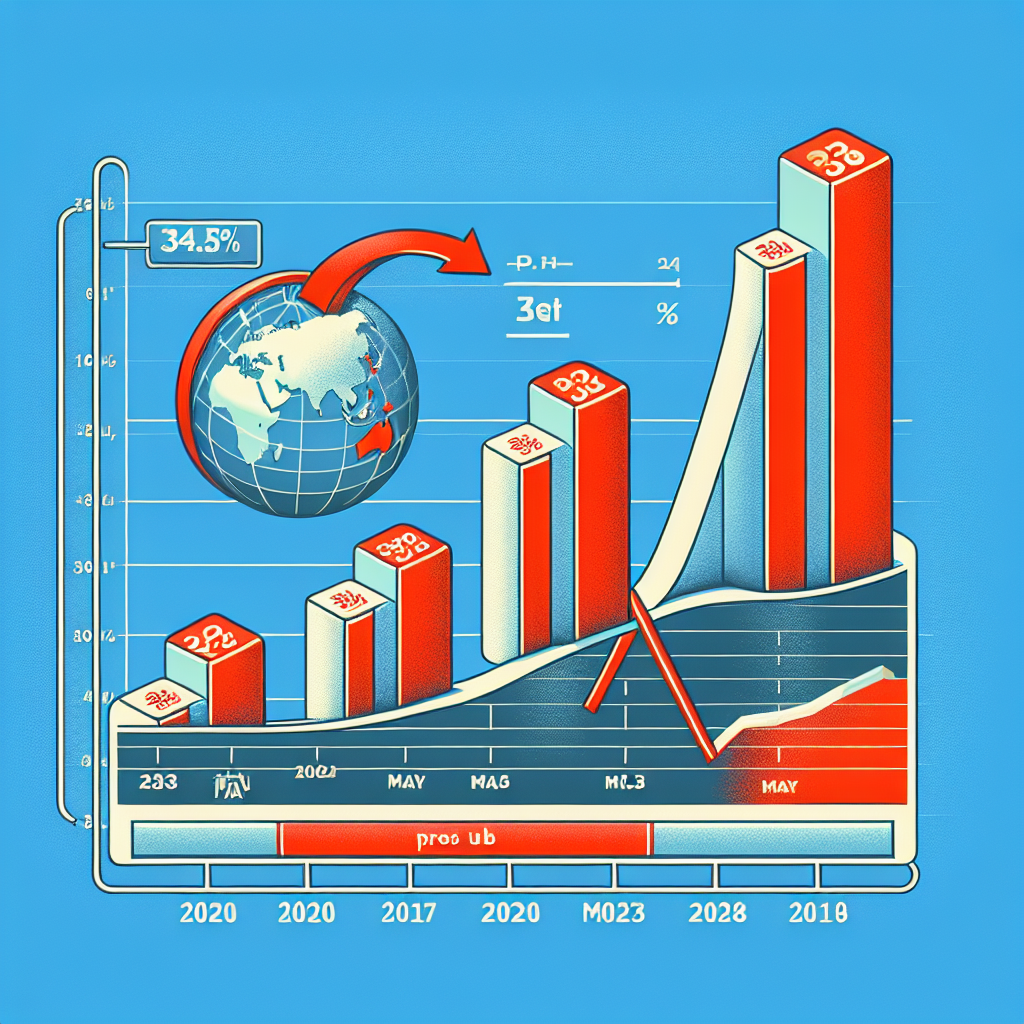China’s General Administration of Customs disclosed on Monday that in May, Chinese exports to the United States plummeted by 34.5%, marking the biggest drop since the outbreak of the COVID-19 pandemic in early 2020. Despite Beijing and Washington reaching a preliminary agreement in mid-May to temporarily reduce reciprocal tariffs for 90 days, export data indicates that the pressure has not been alleviated.
Meanwhile, Chinese Vice Premier He Lifeng and U.S. Treasury Secretary Scott Bessent are scheduled to restart negotiations in London on Monday. The world is closely monitoring whether this round of talks can resolve the escalating trade tensions between the U.S. and China.
According to official Chinese data, China’s overall export value in May increased by 4.8% year-on-year in USD terms, falling short of the market’s expectations of 5% and significantly lower than April’s 8.1% growth. Import value decreased by 3.4% year-on-year, far below the estimated 0.9%, highlighting the ongoing weakness in domestic demand.
Regarding trade with the U.S., Chinese exports to the U.S. in May declined by 34.5%, marking the largest drop in five years; imports from the U.S. also decreased by 18.1%. As a result, China’s trade surplus with the U.S. decreased by 41.55% year-on-year, shrinking to $18 billion. However, the overall trade surplus increased by 25% annually, reaching $103.2 billion.
Xu Tianchen, a senior economist at the Economist Intelligence Unit (EIU), stated, “Although some high tariffs began to be lifted in mid-May, the damage has already been done.”
Following the imposition of high tariffs by the U.S., Chinese exporters have attempted to pivot towards other markets for support. Official data shows that in May, China’s exports to ASEAN countries increased by nearly 15%, while exports to the EU and African markets grew by 12% and over 33% respectively.
However, these growth figures are still insufficient to fully compensate for the sharp decline in exports to the U.S.
Xu Tianchen analyzed that the slowdown in Chinese exports in May could be attributed to both a decrease in U.S. demand and intensified customs inspections and export regulations by the Chinese government. He noted a significant reduction in shipments of certain rare earth items, with overall rare earth exports being “almost halved.”
Exports of smartphones and home appliances also decreased by approximately 10% and 6%, respectively.
Meanwhile, Chinese exports of automobiles and ships continued to grow, with a 22% and around 5% annual increase in May, respectively; on the import side, soybean imports surged to a record of 13.92 million tons, a 36.2% annual increase, while imports of crude oil, coal, and iron ore notably declined, indicating that domestic demand remains weak amid rising external pressures.
Despite the expansion of China’s trade surplus in May, the country’s economic fundamentals remain weak. The National Bureau of Statistics of China released data showing a year-on-year decrease of 0.1% in the Consumer Price Index (CPI) and a significant 3.3% drop in the Producer Price Index (PPI), the largest decline in nearly two years. The subdued price data indicates that domestic demand is still insufficient, and deflationary pressures continue to rise.
To boost the economy, the Beijing authorities have recently implemented multiple monetary stimulus measures, including lowering the Loan Prime Rate (LPR) and providing 500 billion RMB in low-interest loans to support elderly care and service industry consumption.
Nevertheless, the performance of the real estate and retail sectors continues to remain weak, further increasing China’s reliance on foreign trade exports.
As the U.S. and China gear up for a new round of trade negotiations in London, this marks the second meeting between the two sides. Previously, both parties accused each other of violating the Geneva trading agreement, leading to a renewed escalation in tensions.
The U.S. accused China of delaying approval for exporting more critical minerals to the U.S.; whereas China criticized the U.S. for canceling visas for Chinese students and tightening restrictions on chip exports, causing the negotiations to deadlock temporarily.
Last week, U.S. President Trump and CCP leader Xi Jinping held a telephone call for about 90 minutes, agreeing that their trade representatives would meet in London later that week. Subsequently, China also moderately relaxed restrictions on the export of some critical minerals.
Regarding the U.S.-China trade situation, Zichun Huang, a China economist at Capital Economics, stated that the slowdown in exports in May reflects the impact of decreased U.S. orders before the trade truce, with expectations of a partial rebound from June onwards.
However, she also warned that the existing tariffs are unlikely to be further reduced and could even be raised again, leading to a slowdown in China’s export growth by the end of the year.
Meanwhile, internal industry competition in China is intensifying, with the automotive market being particularly noticeable. Market observers indicate that in the competition for market share, some car companies have initiated a new wave of price cuts recently.
Huang noted, “We still expect China to maintain a deflationary state due to continued overcapacity this year and next.”
(This article references relevant reports from Reuters and CNBC)

